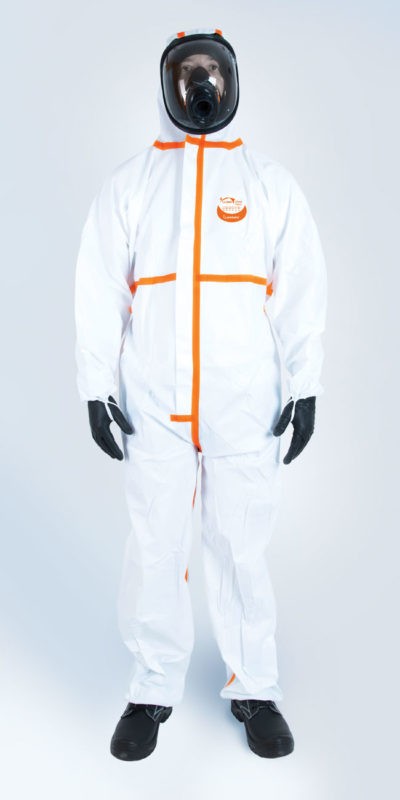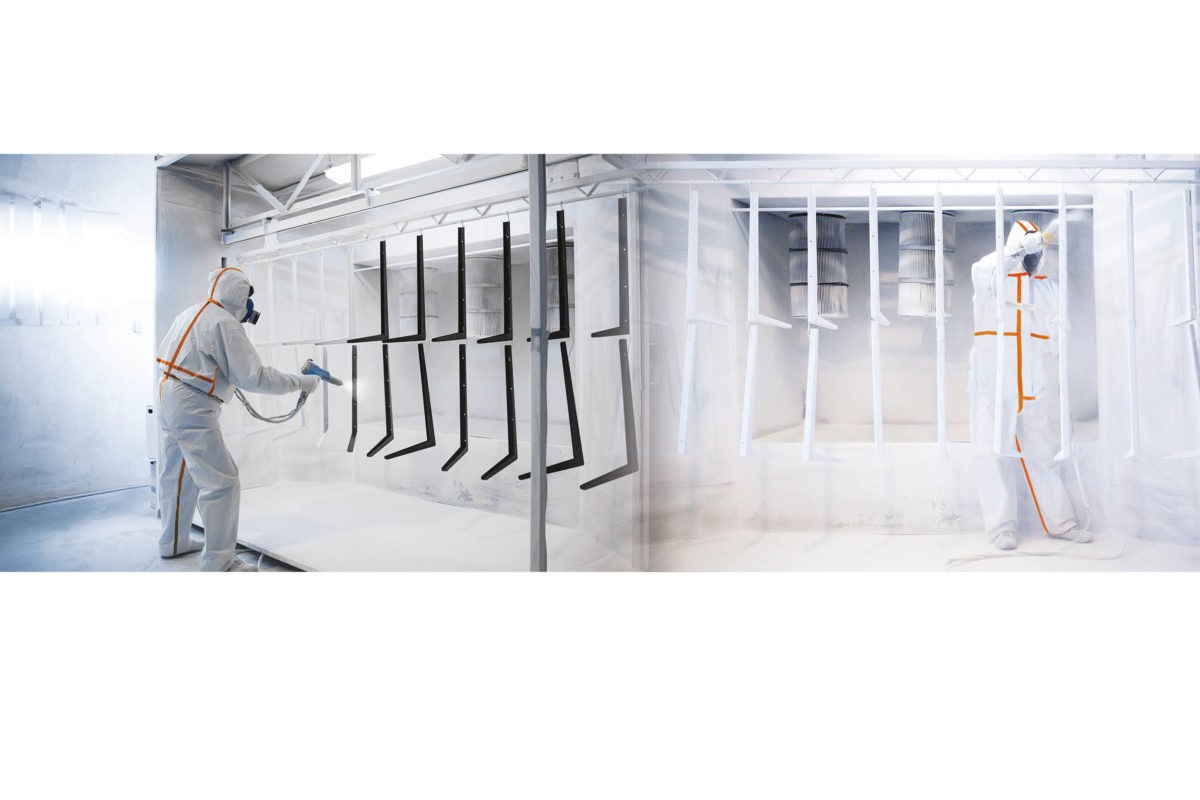

PROFESSION SHEET : PAINT INDUSTRIES – PAINTING SUIT
16 April 2018
Which protective equipment must be used in the industrial painting? Please find in our “protection guide”, protective coverall adapted to industrial painting applications.
PROFESSION SHEET : PAINT INDUSTRIES – PAINTING SUIT.pdfINTRODUCTION
The paint industry comprises 3 categories: water-based paint, powder paint, and solvent-based paint. The latter is the most dangerous for health and still represents nearly half of all industrial applications. It is critical to select your short-term protective painting suit depending on the amount of paint used, the method of application, and the workspace, whether it is ventilated or not.
The spray application of a solvent-based paint requires Category 3 Type 4 PPE according to EN14605: Mistproof clothing. Our protective solutions offer sealed seams against liquid aerosols and powder sprays.
DIFFERENT CATEGORIES OF INDUSTRIAL PAINTS
Water-based paints
Composition: about 60 to 80% of water, the remainder featuring a small amount of solvents, pigments and adjuvants.
Main risks: Even if the solvents are in limited numbers, the application by gun sprays aerosols on the painter.
Sectors impacted by risks linked to water-based paints:
- Body painting Operations: original and repair paintings. Consumer painting Operations: ceilings, walls and floors.
- Consumer painting Operations: ceilings, walls and floors
Powder paints
Composition: About 60% binders (resins/hardeners), 35% inorganic or organic pigments, 5% adjuvants.
Main risks: Powder application using aerosols, maintenance operations, switching paint colors, loading tanks, emptying drums, and cleaning of equipment. Explosive hazards.
Solvent-based paints
Composition: binders (resins / hardeners, pigments, fillers, and additives) Epoxy, glycerophthalic, polyurethane paints. Aerosol application of solvent based paint. Maintenance operations and cleaning of equipment. Explosive hazards
Sectors impacted by risks linked to powder and solvent based paints:
Industrial Painting Operations: automotive industry, metal pre-lacquering, aeronautic and railway construction, furniture, household appliances.
Marine Painting Operations: applications on ships and offshore installations
Construction paint Construction and renovation of buildings and metalwork
ADDITIONAL RISKS: STATIC ELECTRICITY DISCHARGE
Solvents also have a high risk of explosions. Friction, contact or separation produce static electricity which, if not removed by proper grounding, can spontaneously discharge while creating a high voltage spark. The WEEPRO MAX PLUS and WEEBACK ranges are coated with antistatic treatment on both sides of the coveralls. The antistatic treatment on the outer surface of the protective clothing prevents powder and other projections from sticking to the suit.
PAINTING SUIT FOR INDUSTRIAL PAINT WORKS
WEEPRO MAX PLUS
Painting suit providing protection against sprays of solvent-based paint aerosols. Its waterproof seams and self-adhesive flap provide complete protection during the spraying of paints and powders. It is suitable for environments with paint mists.
WEEBACK
Coverall providing protection against sprays of solvent-based paint aerosols. Its waterproof seams and self-adhesive flap provide complete protection against aerosols and powders. The entire back is ventilated with a super-breathable blue colored material
Download it here our profession sheet – painting suit





